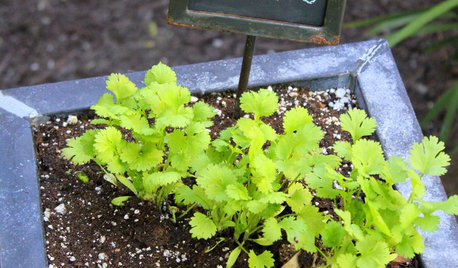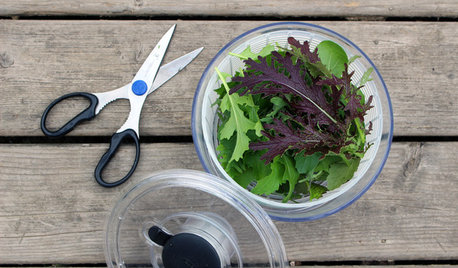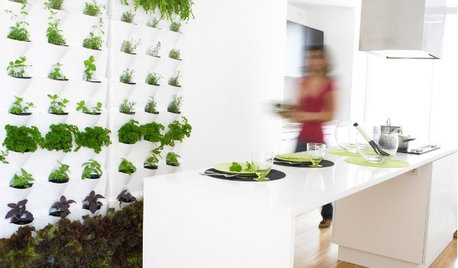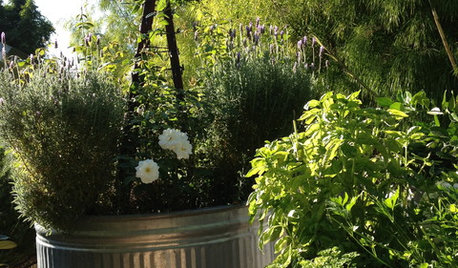Need help in starting a herb and veggie garden
bagardenermom
16 years ago
Related Stories

GARDENING GUIDESSeeds or Seedlings? How to Get Your Garden Started
Growing delicious herbs and vegetables starts with knowing your goals and when you want to plant
Full Story
HOUZZ TVHouzz TV: How to Make and Plant a Veggie Box
See how to start edibles from seed, then transfer the seedlings to a box on stilts to make harvesting more fun
Full Story
FARM YOUR YARD6 Things to Know Before You Start Growing Your Own Food
It takes time and practice, but growing edibles in the suburbs or city is possible with smart prep and patience
Full Story
GARDENING GUIDESGet a Head Start on Planning Your Garden Even if It’s Snowing
Reviewing what you grew last year now will pay off when it’s time to head outside
Full Story
GARDENING GUIDESHerb Garden Essentials: Versatile Cilantro Adds Flavor to Herb Gardens
Love it or hate it, this cool-season herb contributes its unique flavor to any number or the world’s cuisines
Full Story
FARM YOUR YARDThe 8 Tools That Help Bring the Farm to Your Table
Vegetable gardeners get a big assist from these essential helpers
Full Story
MOST POPULARHow to Start a Cool-Season Vegetable Garden
Late summer and late winter are good times to plan and plant cool-season crops like salad greens, spinach, beets, carrots and peas
Full Story
Guest Picks: Herb Gardens for Small Kitchens and Gardens
Up the wall, easily portable or beautifully decorative, these solutions help even the smallest kitchens and balconies get growing
Full Story
EDIBLE GARDENS12 Essential Herbs for Your Edible Garden
Make home cooking and drinks even better with herbs plucked from your own backyard or windowsill pot
Full Story
EDIBLE GARDENSGrow Herbs for Fresh Flavor and Good Looks in the Garden
With sun and a patch of ground, you can have all the fresh flavor you need for cooking right outside your door. Here's how to get started
Full StorySponsored
Columbus Area's Luxury Design Build Firm | 17x Best of Houzz Winner!




Okiedawn OK Zone 7
sammy zone 7 Tulsa
Related Discussions
WANTED: Starting Over, need veggies/herbs
Q
help, I need some veggie and herb recommendations
Q
I'm starting to grow a small herb garden. I need help and advice
Q
Starting Long, Narrow Herb Garden - need ideas
Q
Okiedawn OK Zone 7
butterflymomok
sammy zone 7 Tulsa
pattyl
butterflymomok
OklaMoni
basueok
Okiedawn OK Zone 7
basueok
backyardmomma
Okiedawn OK Zone 7
barton
Okiedawn OK Zone 7
backyardmomma
barton